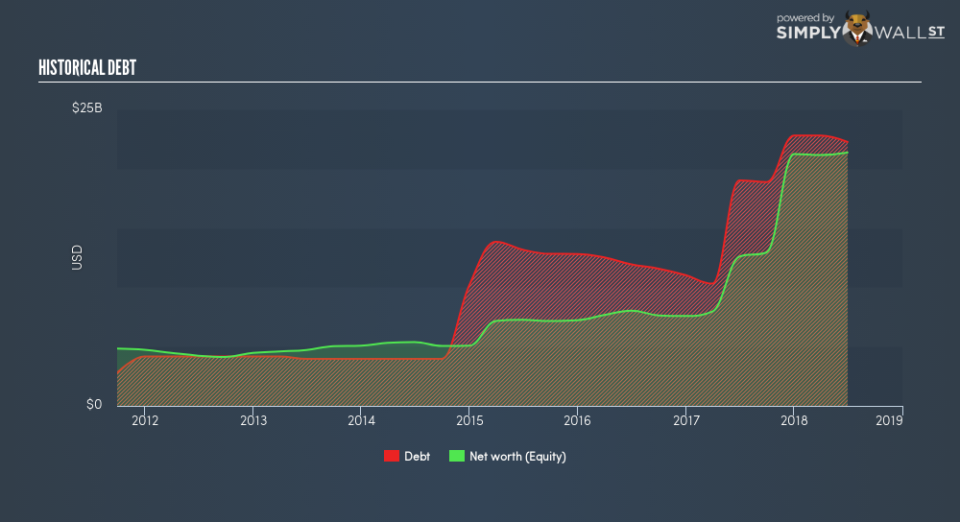What You Must Know About Becton Dickinson and Company’s (NYSE:BDX) Financial Strength

Investors seeking to preserve capital in a volatile environment might consider large-cap stocks such as Becton Dickinson and Company (NYSE:BDX) a safer option. Doing business globally, large caps tend to have diversified revenue streams and attractive capital returns, making them desirable investments for risk-averse portfolios. But, the key to extending previous success is in the health of the company’s financials. Today we will look at Becton Dickinson’s financial liquidity and debt levels, which are strong indicators for whether the company can weather economic downturns or fund strategic acquisitions for future growth. Note that this commentary is very high-level and solely focused on financial health, so I suggest you dig deeper yourself into BDX here.
View our latest analysis for Becton Dickinson
How does BDX’s operating cash flow stack up against its debt?
BDX has built up its total debt levels in the last twelve months, from US$19.02b to US$22.25b – this includes both the current and long-term debt. With this growth in debt, the current cash and short-term investment levels stands at US$1.40b for investing into the business. Moreover, BDX has generated US$2.69b in operating cash flow in the last twelve months, leading to an operating cash to total debt ratio of 12.1%, indicating that BDX’s current level of operating cash is not high enough to cover debt. This ratio can also be interpreted as a measure of efficiency as an alternative to return on assets. In BDX’s case, it is able to generate 0.12x cash from its debt capital.
Does BDX’s liquid assets cover its short-term commitments?
At the current liabilities level of US$6.11b liabilities, it appears that the company has been able to meet these commitments with a current assets level of US$7.53b, leading to a 1.23x current account ratio. Usually, for Medical Equipment companies, this is a suitable ratio since there’s sufficient cash cushion without leaving too much capital idle or in low-earning investments.
Can BDX service its debt comfortably?
Considering Becton Dickinson’s total debt outweighs its equity, the company is deemed highly levered. This is not unusual for large-caps since debt tends to be less expensive than equity because interest payments are tax deductible. Accordingly, large companies often have an advantage over small-caps through lower cost of capital due to cheaper financing. We can assess the sustainability of BDX’s debt levels to the test by looking at how well interest payments are covered by earnings. A company generating earnings after interest and tax at least three times its net interest payments is considered financially sound. In BDX’s case, the ratio of 4.43x suggests that interest is well-covered. Large-cap investments like BDX are often believed to be a safe investment due to their ability to pump out ample earnings multiple times its interest payments.
Next Steps:
At its current level of cash flow coverage, BDX has room for improvement to better cushion for events which may require debt repayment. Though, the company exhibits an ability to meet its near-term obligations, which isn’t a big surprise for a large-cap. Keep in mind I haven’t considered other factors such as how BDX has been performing in the past. You should continue to research Becton Dickinson to get a more holistic view of the stock by looking at:
Future Outlook: What are well-informed industry analysts predicting for BDX’s future growth? Take a look at our free research report of analyst consensus for BDX’s outlook.
Valuation: What is BDX worth today? Is the stock undervalued, even when its growth outlook is factored into its intrinsic value? The intrinsic value infographic in our free research report helps visualize whether BDX is currently mispriced by the market.
Other High-Performing Stocks: Are there other stocks that provide better prospects with proven track records? Explore our free list of these great stocks here.
To help readers see past the short term volatility of the financial market, we aim to bring you a long-term focused research analysis purely driven by fundamental data. Note that our analysis does not factor in the latest price-sensitive company announcements.
The author is an independent contributor and at the time of publication had no position in the stocks mentioned. For errors that warrant correction please contact the editor at editorial-team@simplywallst.com.

